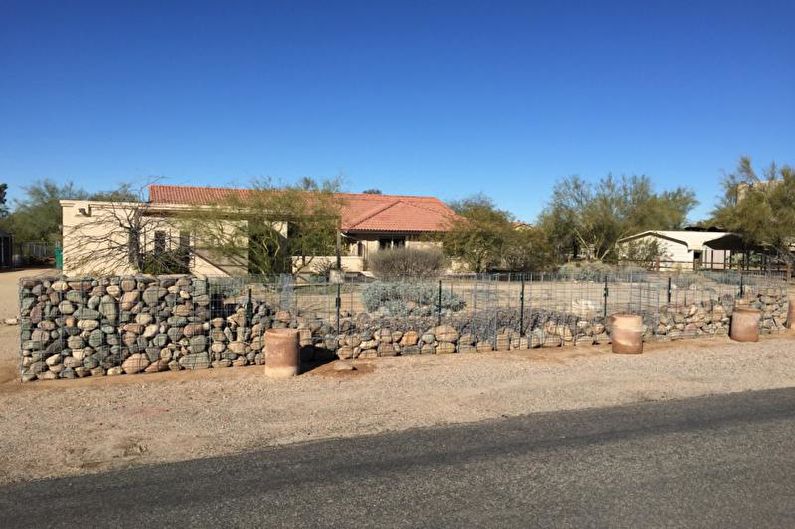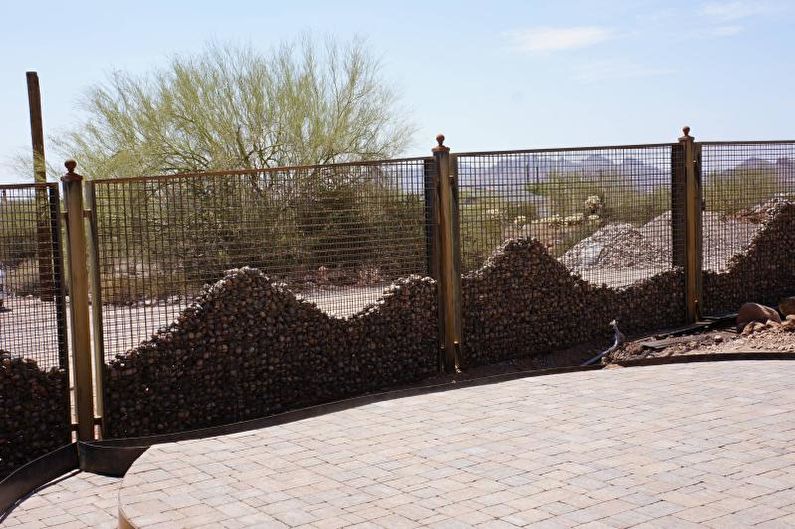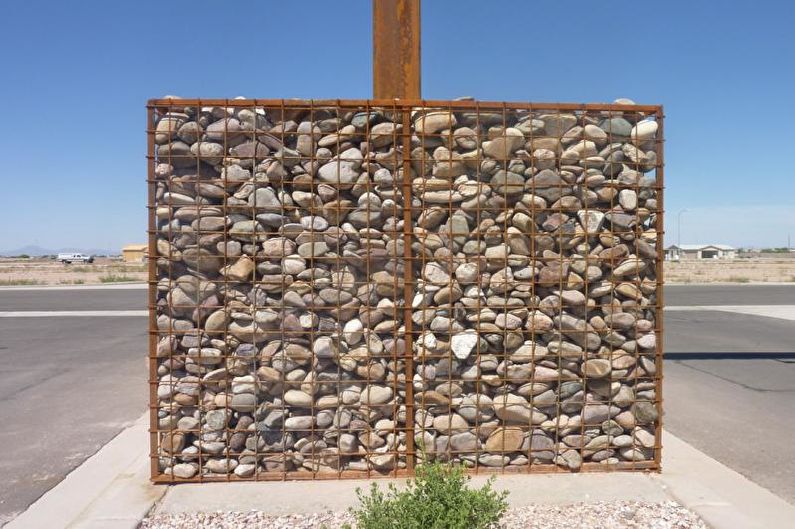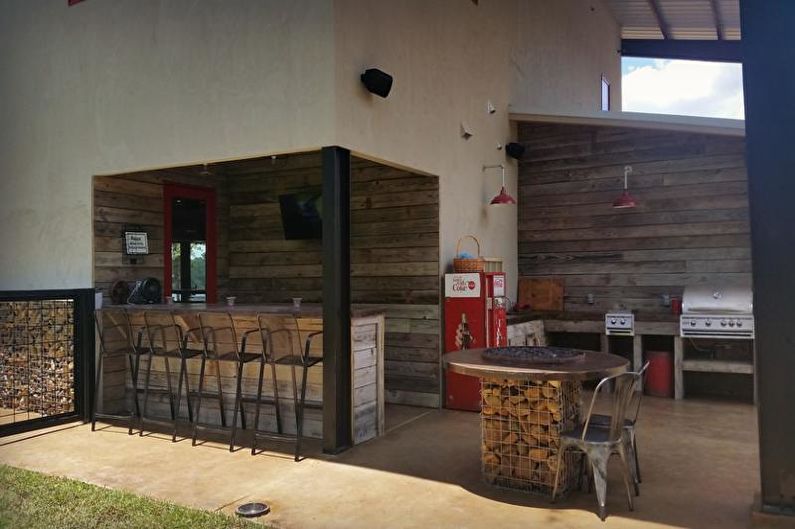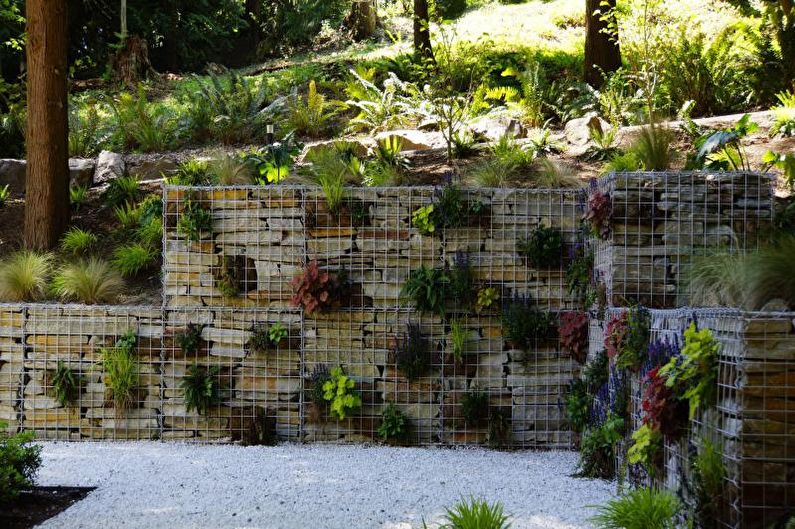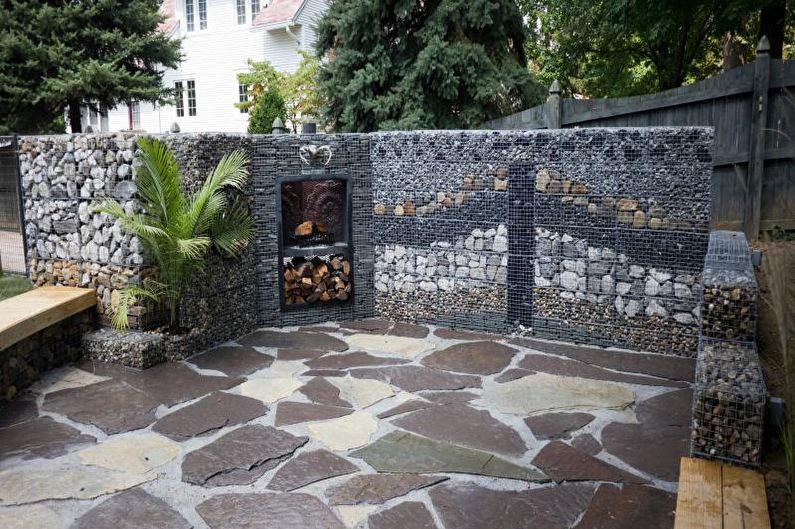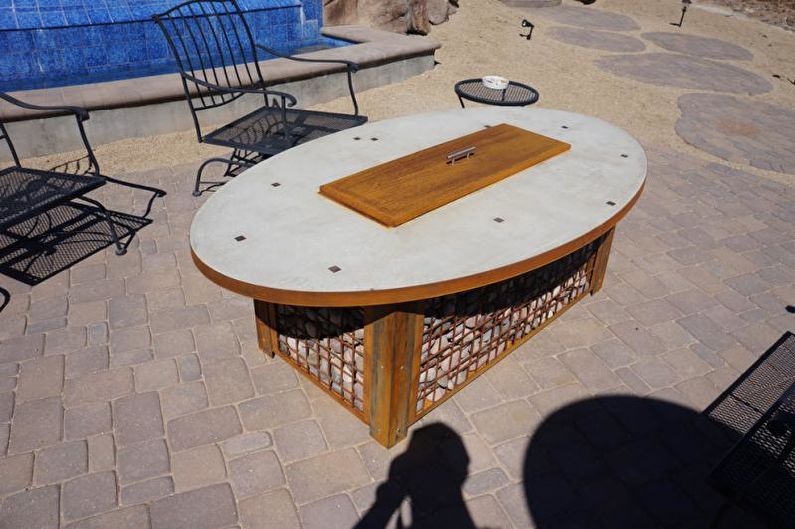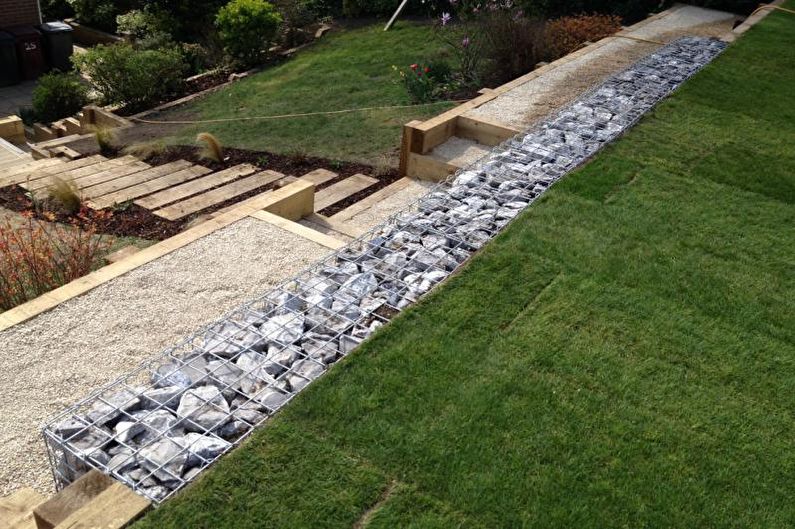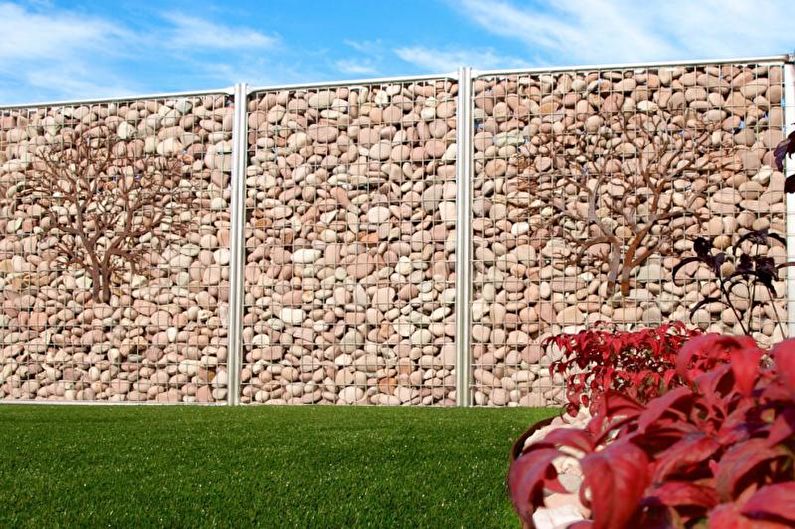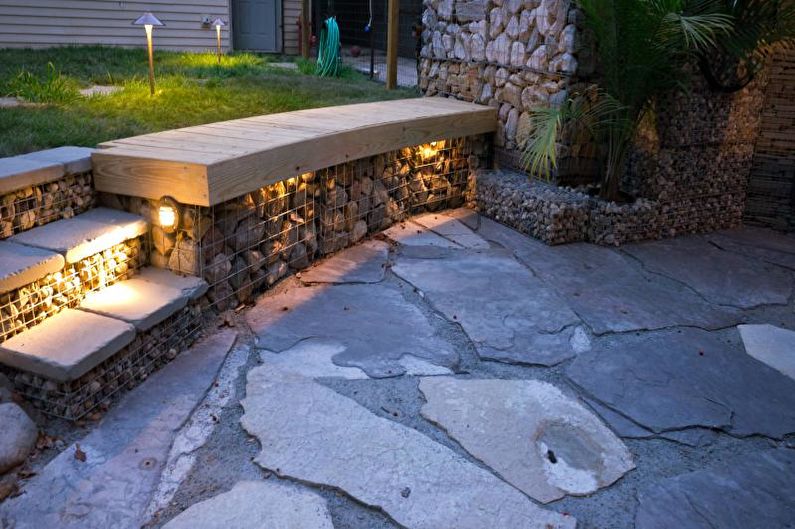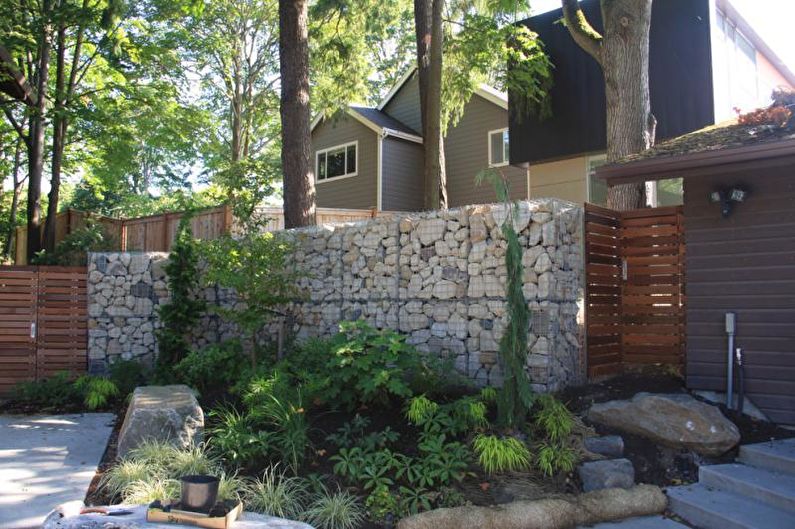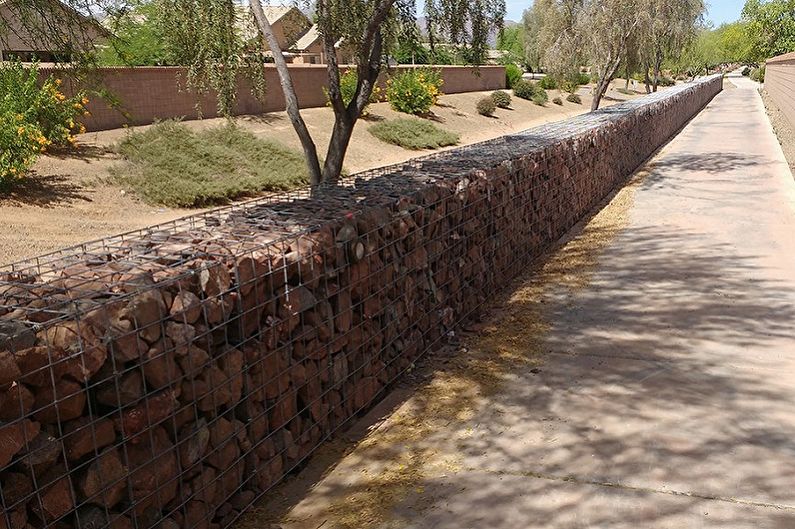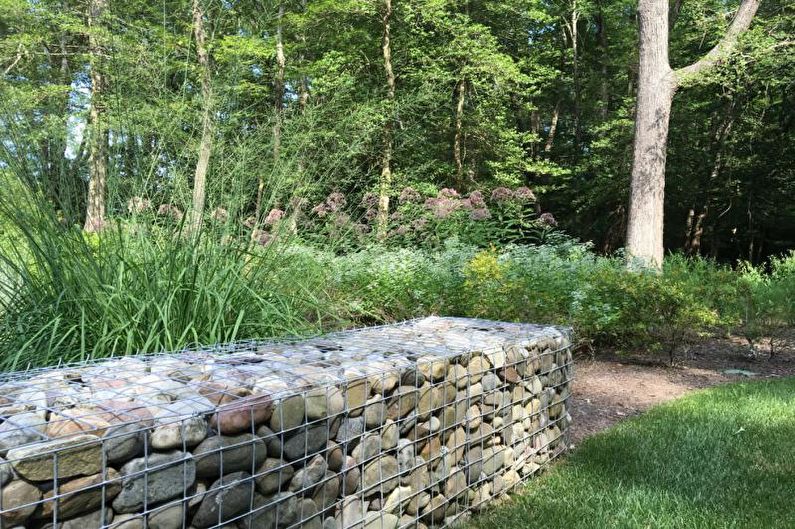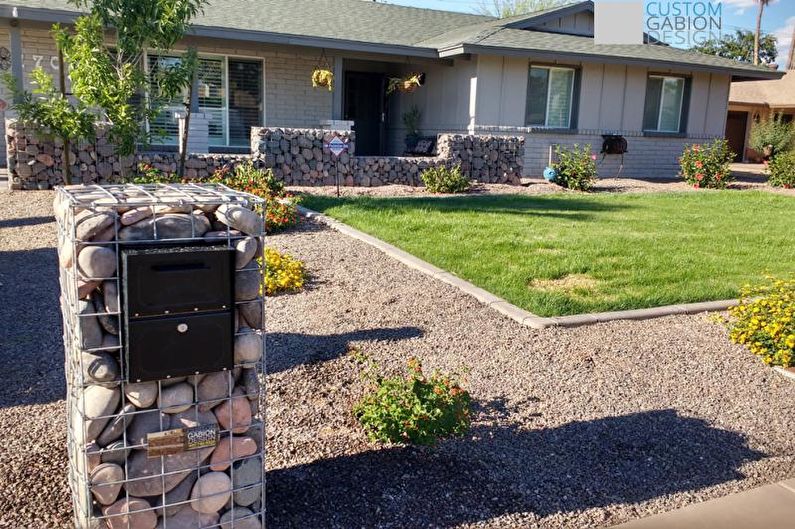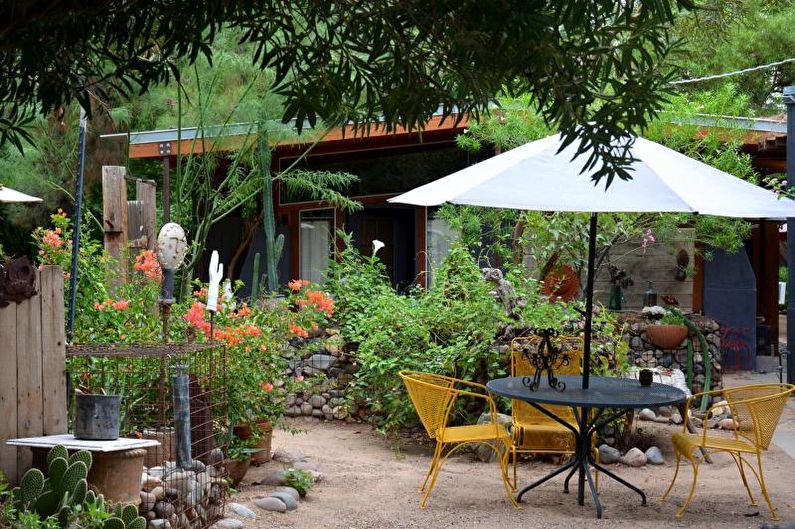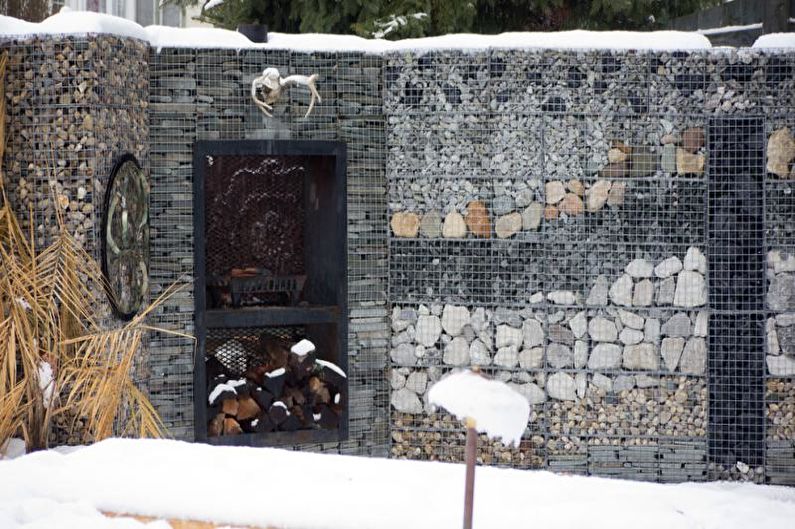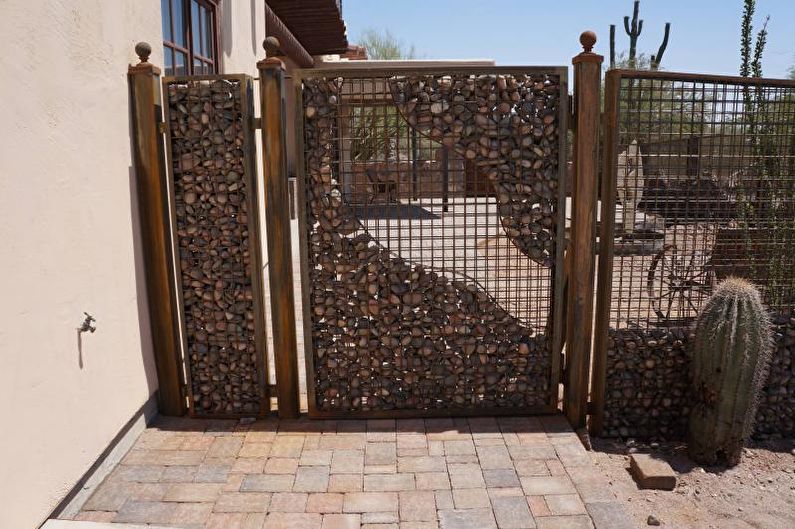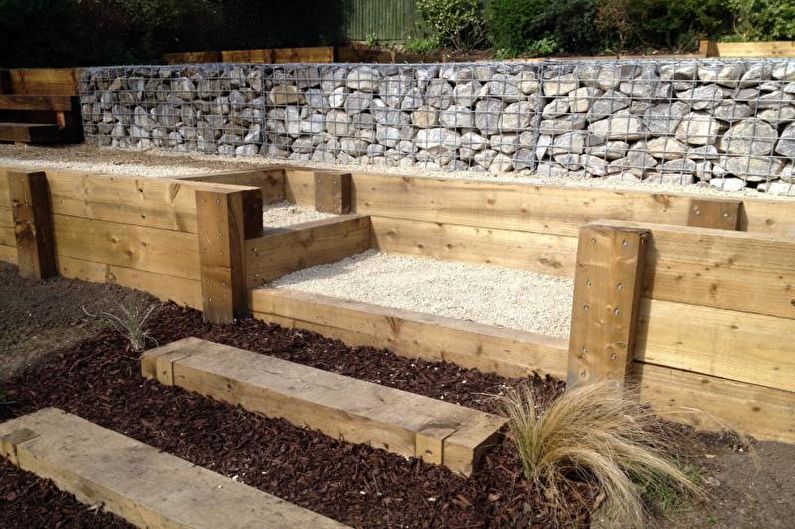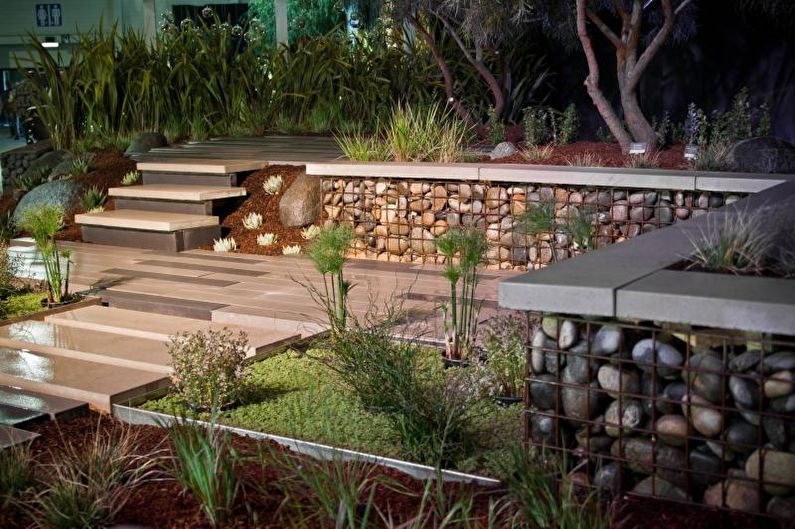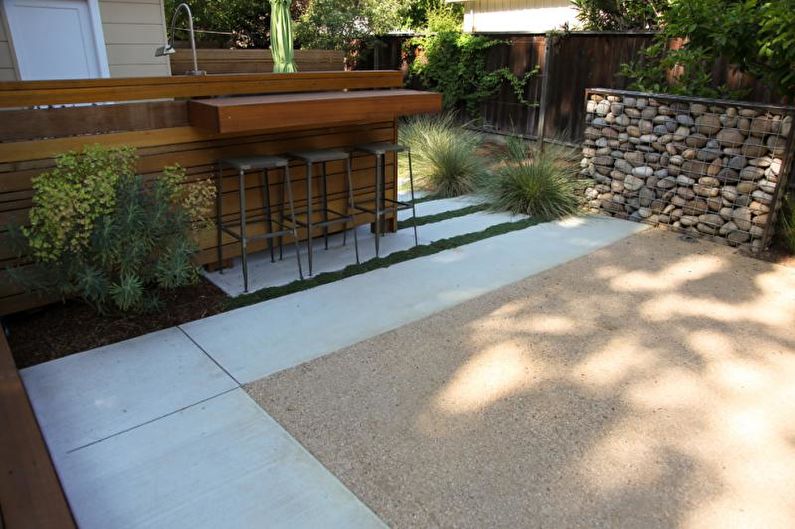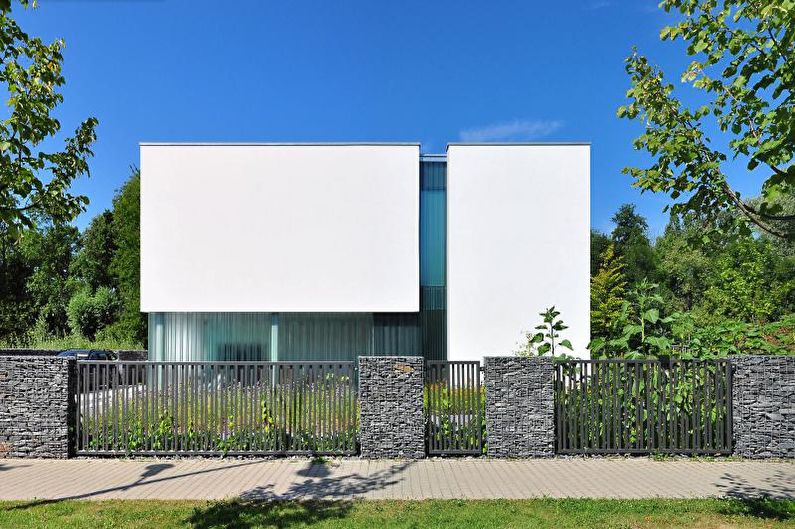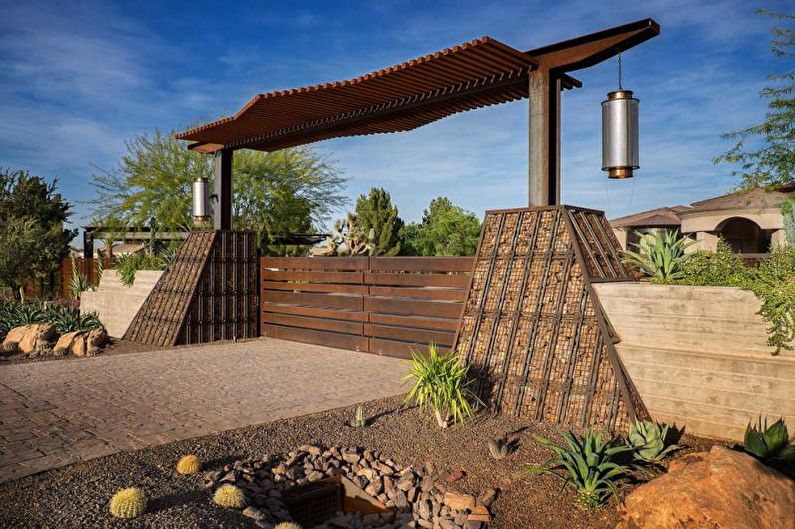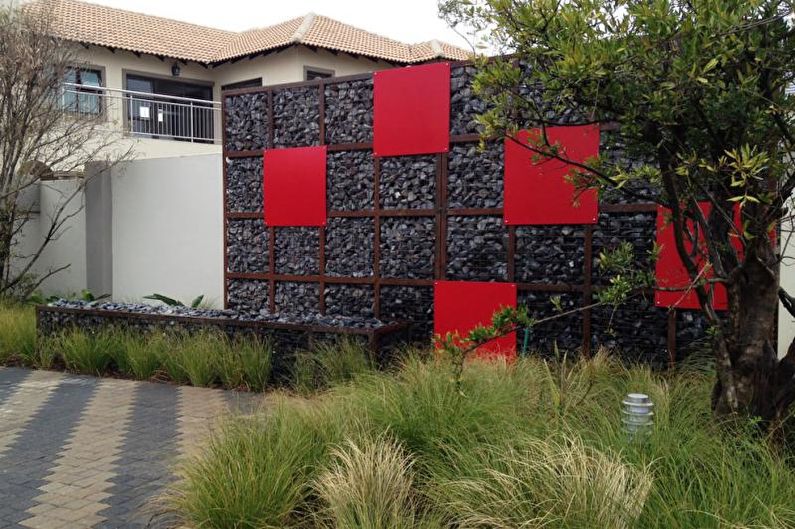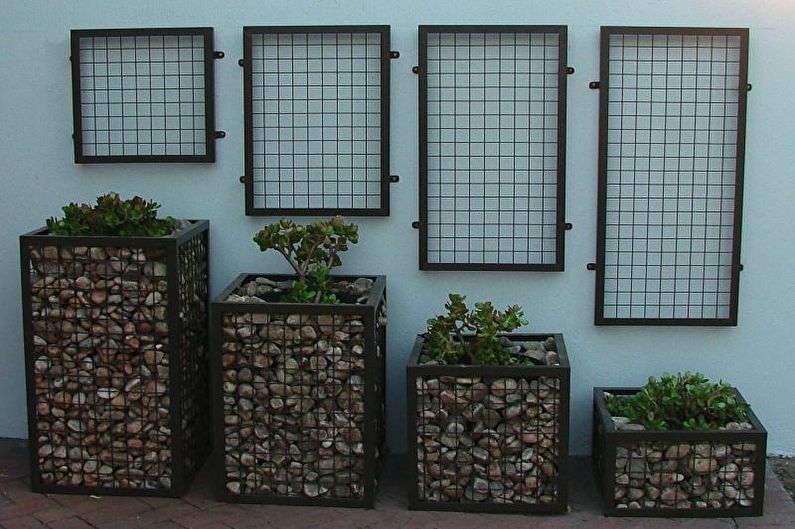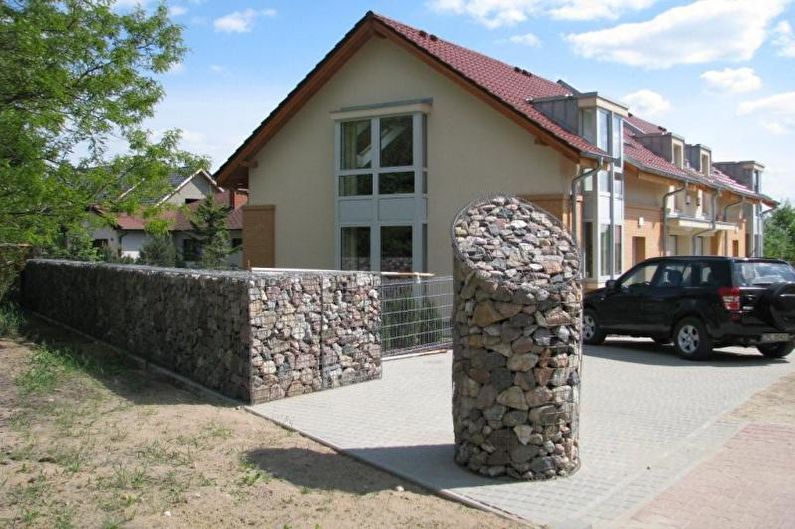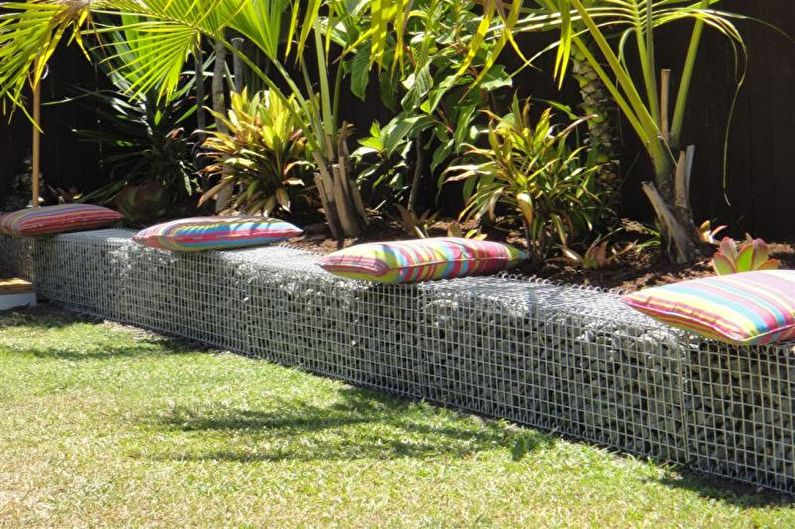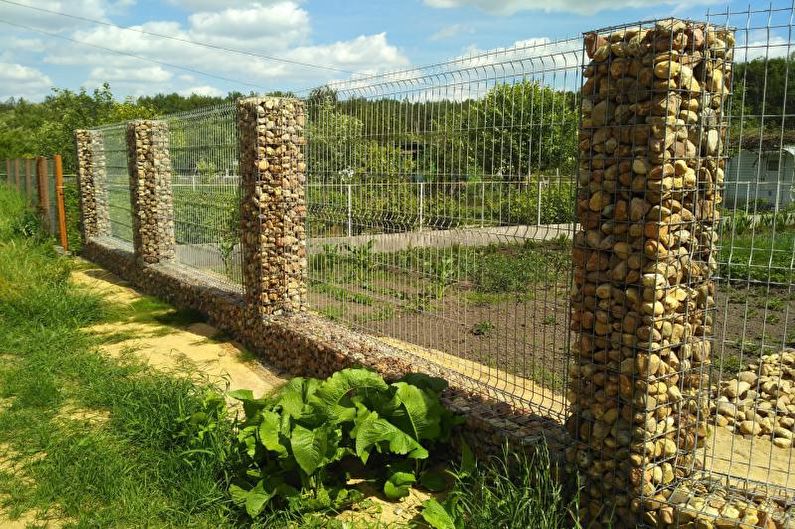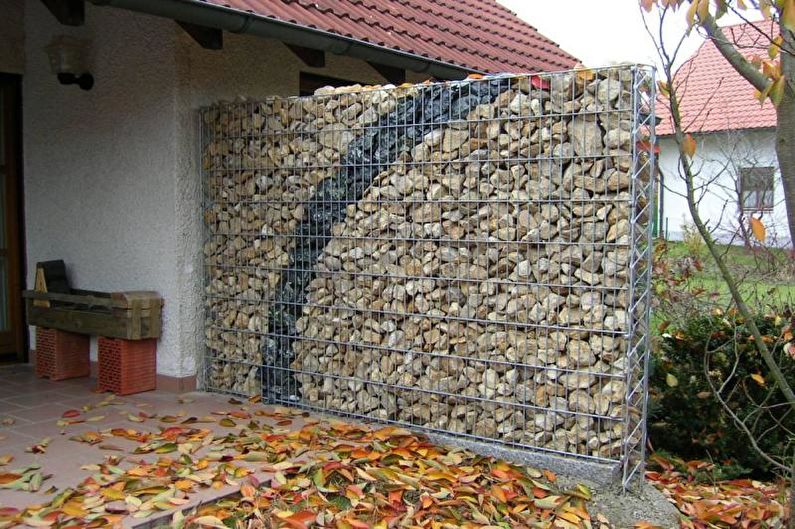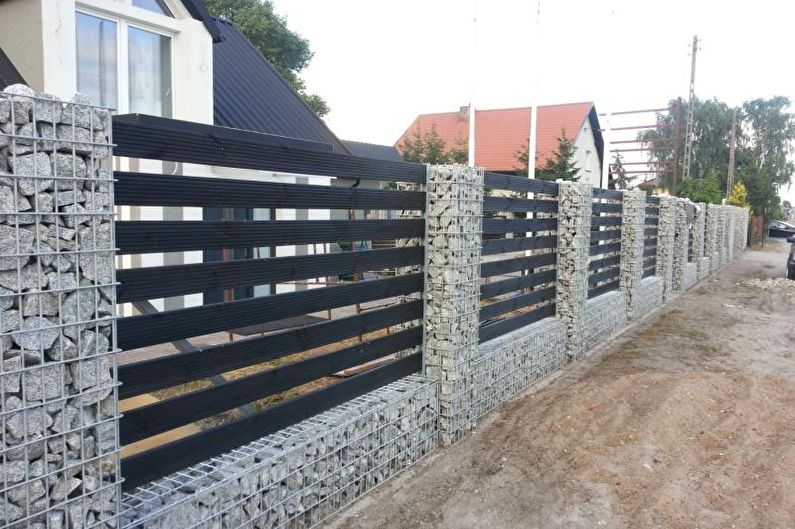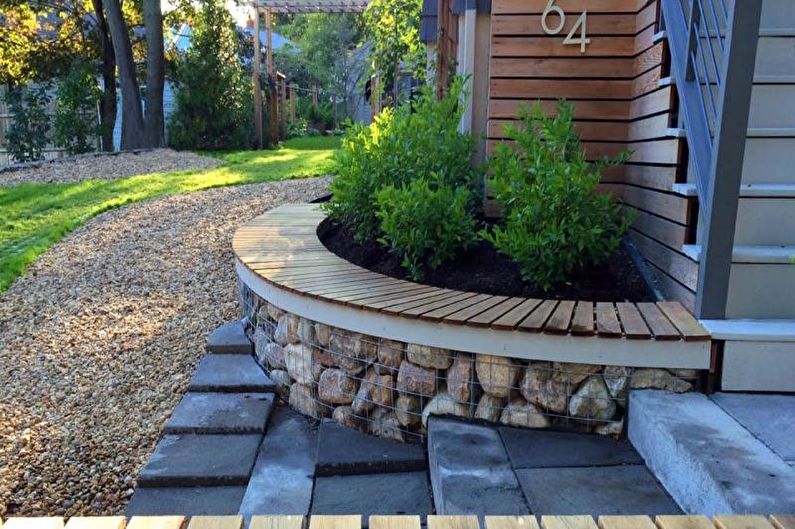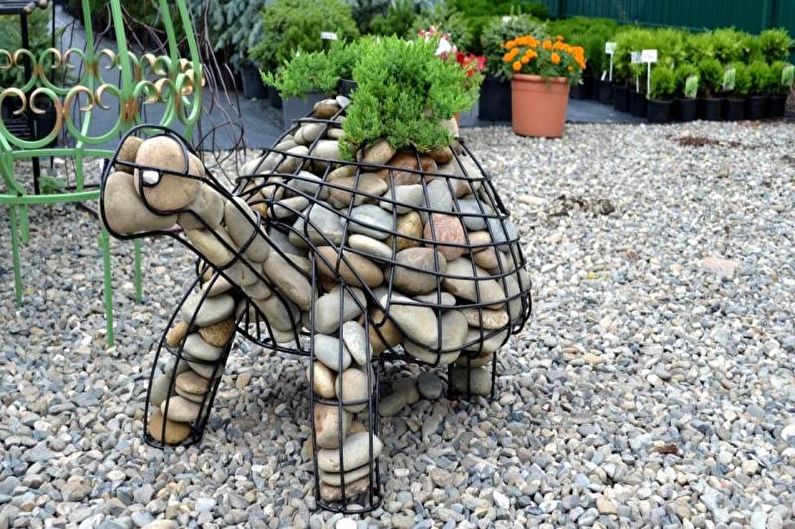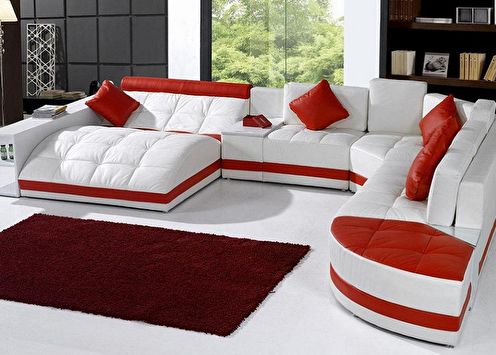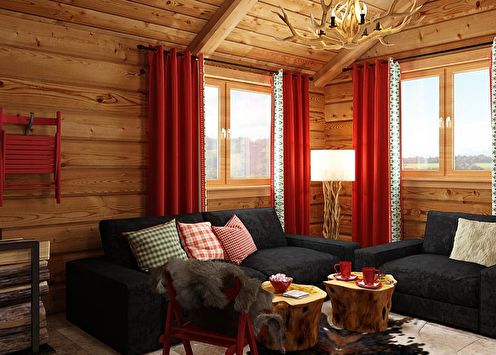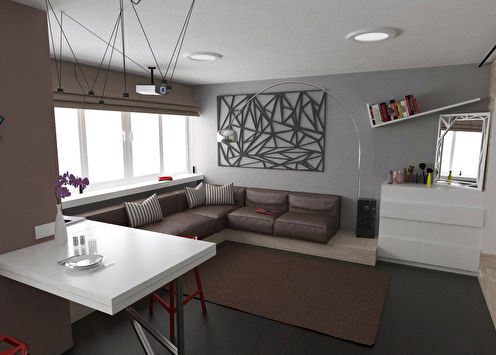
Using gabions is a spectacular and unusual way to decorate a garden. The fence, designed in this way, will be very durable and will last for many years, and the retaining walls will become part of the composition of plantings.
Gabions: what is it?
Gabions, also known as GSI, are a mesh form, consisting, as a rule, of a metal material with a loose filler inside. The romantic name of the building is explained by the country of its origin - sunny Italy, but its translation already hints to us that the situation is more prosaic. Literally, it sounds like a "big cell", and this expression quite accurately reflects the essence. The prototype of these structures are bags of soil and sand, which were used in the XVIII century for the construction of fortifications.
Today, gabions are used at military bases, railways and shores for the same purposes as many centuries ago. However, this technique has increasingly been used as a decoration for a landscape site. The popularity boom can be explained quite simply - relative cheapness along with high quality, ease of assembly and aesthetic appeal.
Boxes are made of galvanized mesh or coated with a polymer for protection against corrosion. If you will not use gabion for engineering purposes, then you can turn to any type of mesh that you like. But choose protected material, unless you are trying to get rust for decoration.

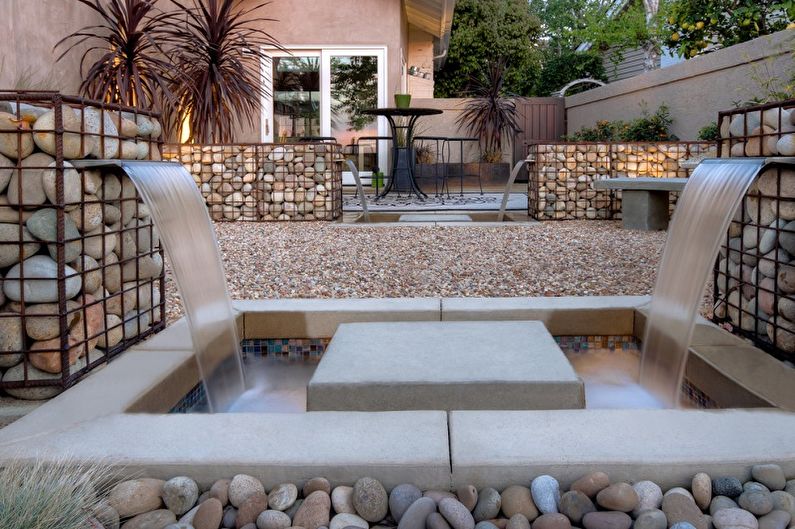
Gabion shapes
Gabions differ, including in accordance with their shape. There are 4 main types:
1. The cylindrical has a smooth configuration resembling a roller fixed at the ends;
2. Mattress-mattress - a kind of narrow tray that closes with a common lid;
3. Box - a box of rectangular shape;
4. The box with the panel for reinforcement has an elongated bottom for high-quality reinforcement.
Overall, gabion has a solid structure. The second and third varieties are equipped with membranes, the purpose of which is to increase the bearing capacity and strength. At the same time, for large structures, it is worth taking care of additional fixation, create a strong frame.
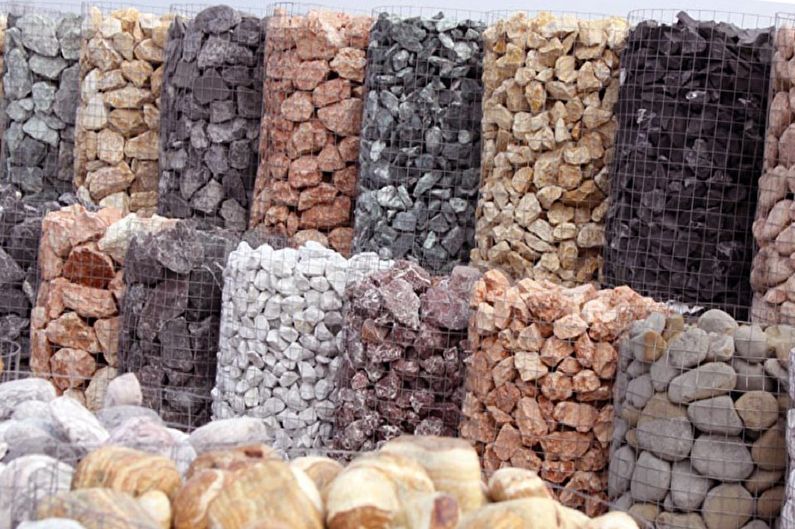
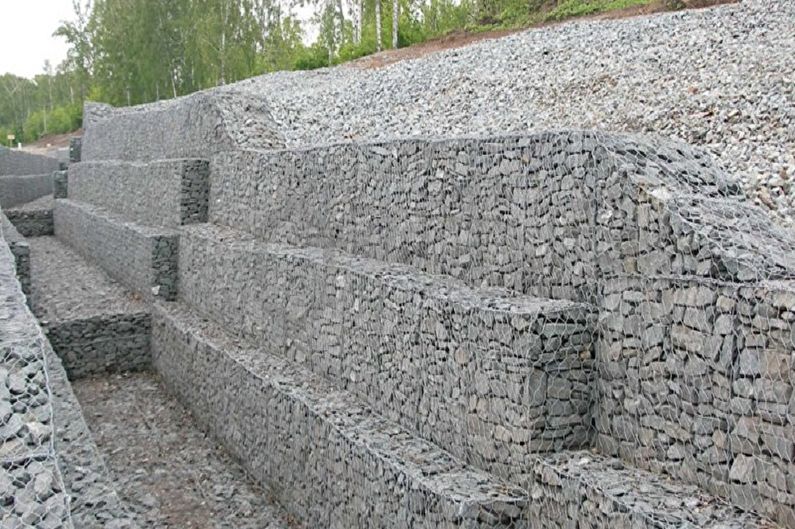
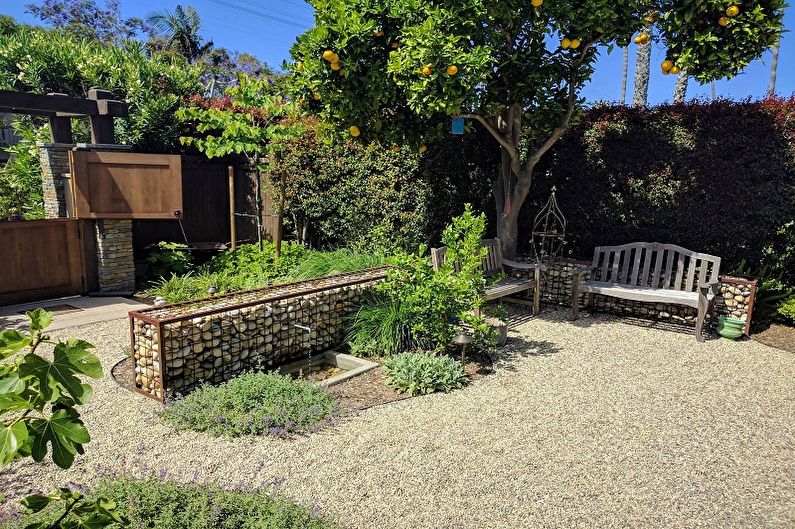
Gabions in landscape design
In addition to the obvious practical engineering advantages, the gabion is attractive for its appearance. Such characteristics ensured the success of the buildings by landscape designers, and the GSI began to be used also for decorative purposes. In the CIS countries, this trend has not yet gained much popularity, and this is a definite plus, because you have the opportunity to be one of the first to apply such an interesting design move on your own site.
The most beautiful thing is that gabions are suitable for the territory in any style and with any promise. Natural landscapes harmoniously complete the stone filler. A metal mesh and a slender structure will allow you to play on a technogenic image that will shade arbitrary plants. They are also able to become an element of a regular garden, since the GSI is an ordered architectural form.
Gabions with a filler made of stones look just fine even in winter and spring. Under a layer of snow-white snow, the structures look especially expressive and spectacular, and spring streams of water will not be able to destroy it. Moreover, heating from the rays of the sun, the stone will provide soil with heat, which will be very useful for garden vegetation.
On the territory of the infield, designs can appear in various incarnations.
1. Retaining walls - the classic use of gabions.The design is incredibly stable and will be an excellent support for terraces, bends and slopes. Modular supports help to create an artificial relief quickly enough and, unlike monolithic structures, they do not require drainage devices. The flexibility of gabions provides stability during seasonal soil shifts. Thus, beautiful and practical GSI in many aspects are ahead of brick and concrete structures.
2. The modular construction makes it possible to use gabions to delimit various zones on the site. At the same time, their ability to drainage comes in handy, because the flower beds and the garden need high-quality drainage.
3. Pebble-based gabions will cope with the issue of coasts prone to creeping. They will design both artificial and natural ponds, complementing their appearance, and in addition will not come into disrepair over time, as is the case with the same concrete.
4. Multilevel structures form an excellent hedge for the entire territory of the site. If you use a pebble backfill, the fence will not create an unnecessarily cumbersome impression. At the same time, such structures in themselves are not stable, so add a strong frame - so the fence will come out not only unusual, but also durable.
5. Grids for gabions - non-trivial material for creating furniture in the garden. Vary the quantity and get various things - tables, chairs or benches. However, such furniture is not mobile; you are unlikely to succeed in transferring it to a new place. Alternatively, you can form a bench that will zonate the space or become a retaining wall - just put on a gabion seat made of wood.
6. Under the ICG, you can hide the fountain system. Use a stone mound.
7. You can add atmosphere to a summer evening in the fresh air thanks to the lamps hidden inside the stone embankment. Or try to make a gabion as a stand for the lamp.
8. If you have not yet decided to build a voluminous object from gabions, create a beautiful decorative accent from one element. So you can select a separate section of the garden area.
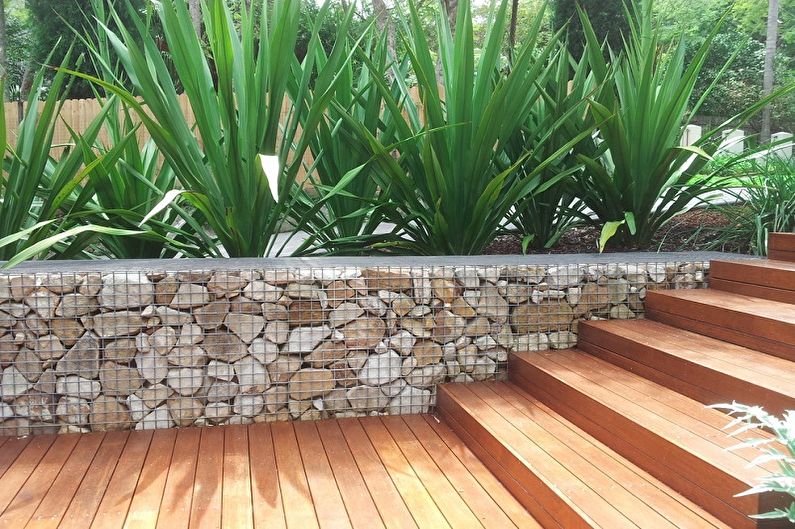
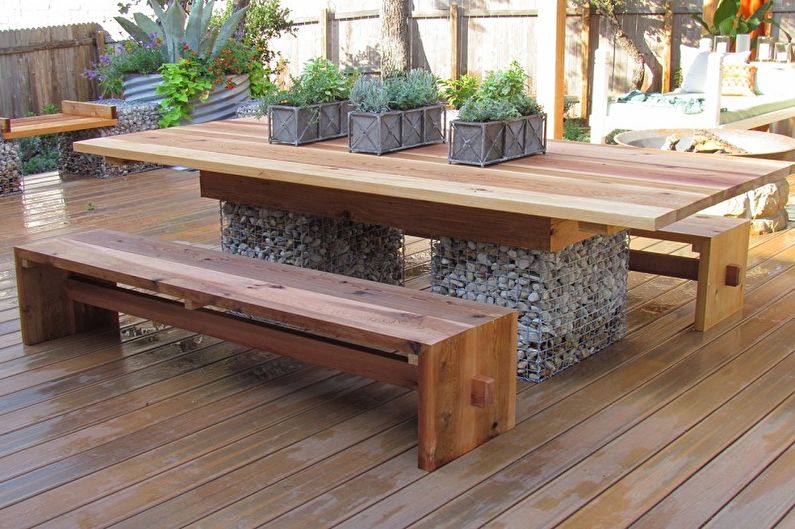
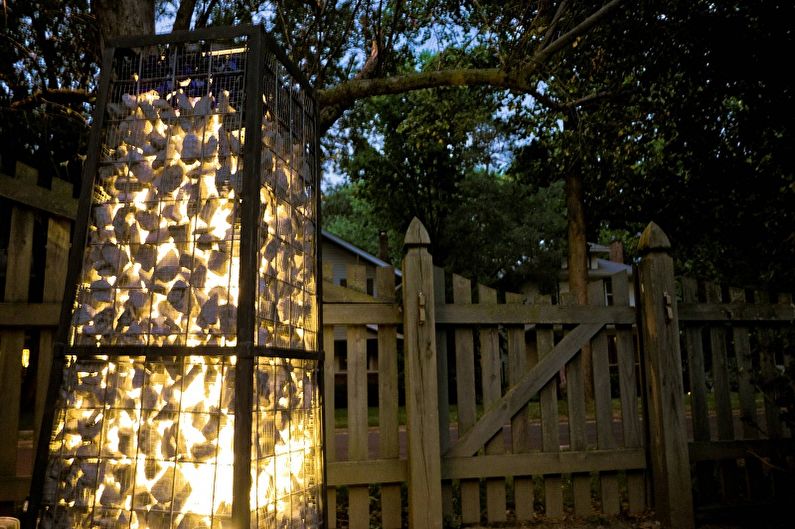
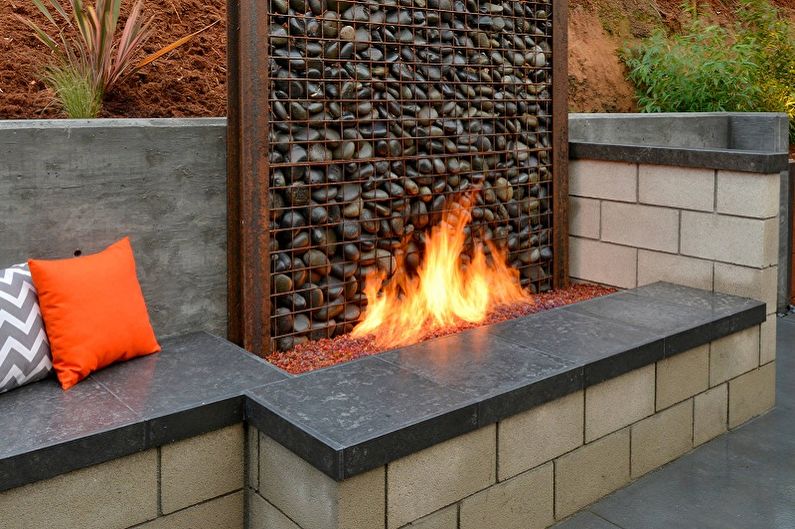
DIY Gabion - how to make
These original and functional designs can be made with your own hands without any difficulties. One only needs to make a little effort and connect the imagination. The grid can be welded on your own or bought at any hardware store. At the same time, filling gabions is a rather interesting occupation.
Before starting construction work, do not forget to prepare the soil. To evenly mark out the area for installing gabions, pull a cord or thread - this will be enough for an even perimeter.
Site preparation is divided into the following steps:
- Clean the top of the soil from the fertile layer, plants and various debris;
- Dig a trench to secure the structure or fill the foundation;
- So that weeds do not germinate under the base, it can be lined with geotextiles.
The manufacturing process itself consists of the following steps:
1. First of all, determine the size and shape of the future gabion;
2. Cut the sheets of the required size from the prepared wire mesh, and bend the resulting sharp edges. This will strengthen the structure and add durability to it;
3. Next, you need to fasten the entire structure and go to the filling;
4. The filler fraction should be 1.5–2 times larger than the size of the mesh cells;
5. Spread filler to avoid voids. To do this, try to choose the size and shape of the filling elements.
Gabion fences are collected without the use of connecting solutions and therefore have little mobility. This design feature has a number of advantages, for example, during expansion or sinking of the land, the fence will not collapse and will not lose its basic shape. The filler will only settle slightly or rise similarly to the soil.In most cases, such changes are not at all noticeable, but if they are striking, then fixing it is quite simple.
To make a mesh frame for the fence of gabions, you can use one of the methods:
- Purchase a fully prepared network of hexagonal cells. It is best if this network is made of twisted wire;
- Buy welded wire mesh cards with a zinc layer of protection;
- Weld the frame yourself. For this, a thick wire is suitable, which must be coated with protective paint.
In some cases, the frames may not be fixed on a concrete foundation, but simply buried in the soil by 25–40 cm. It all depends on the mass of the structure and its location.
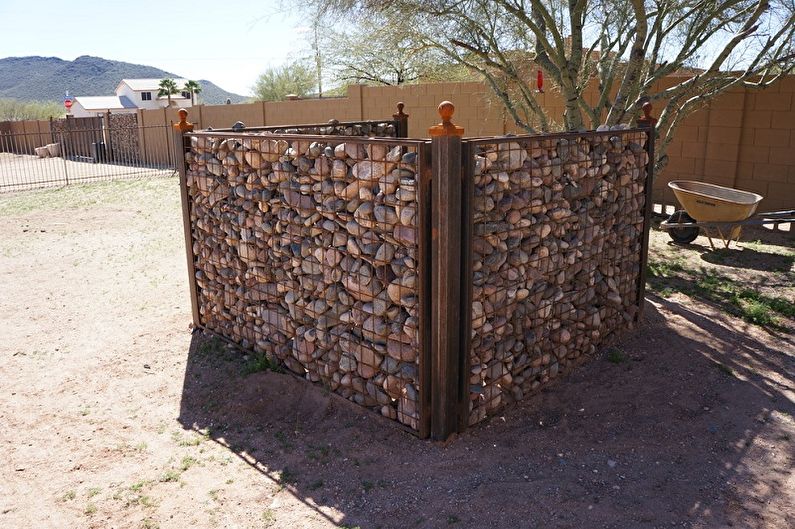
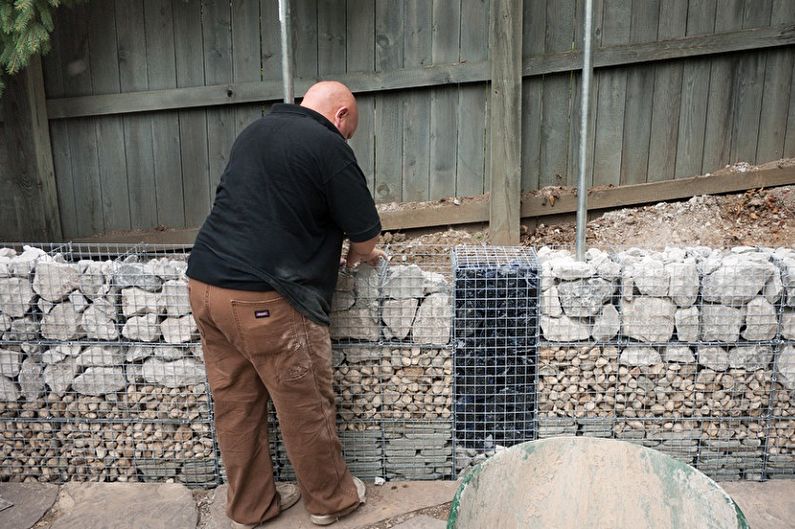
Gabion Tips
During the construction process, you may encounter some features of gabions that can cause difficulties:
- Large and beautiful stones that look great when creating gabions cost a lot of money. That is why use them only for the design of the outer walls, and stack the insides with cheaper materials, for example, broken brick or cinder block;
- To achieve maximum rigidity of the gabion structure, use larger stones and try to stack them as tightly and accurately as possible;
- If you decide to use a lightweight filler, for example, saw cuts of wood, then you need to fix the mesh on a stronger foundation, such as concrete;
- Please note that a thick wire mesh has tremendous stiffness, and frames made from a thin twisted network can lose their shape from the weight of large stones. This will negatively affect the appearance of the entire structure, take this into account when building a gabion.
You can decorate the finished gabion using spotlights or a garland. This design will radiate warmth and romantic mood every evening. Structures do not require maintenance during operation - this is one of the main advantages of ICG. After a while, they will strengthen and will look even more harmonious and natural.

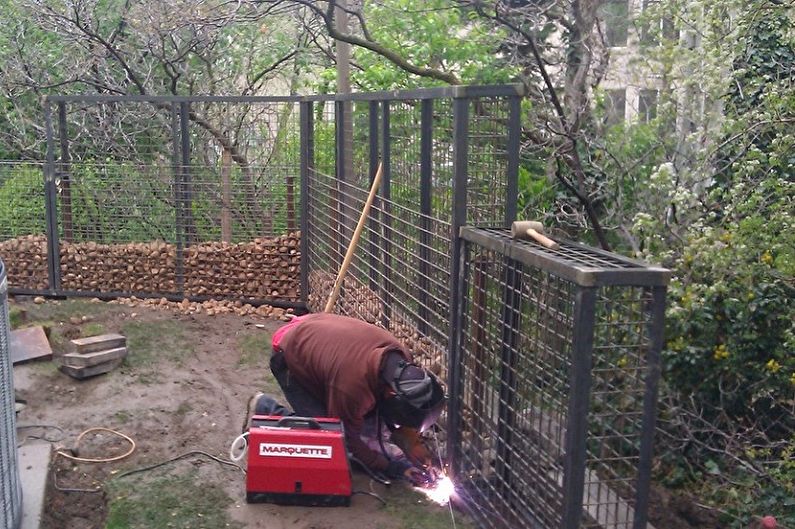
Gabions - photo
You can see even more photos of ideas for using gabions made by yourself in our selection. We wish you inspiration and enjoy your viewing!
